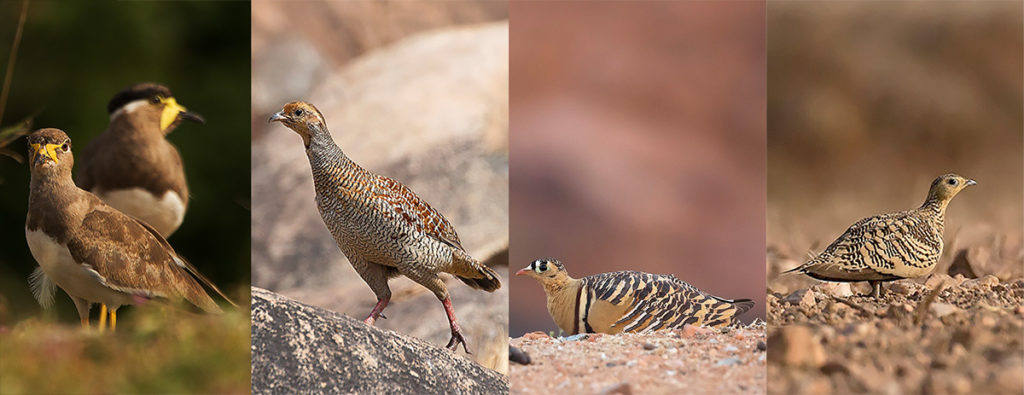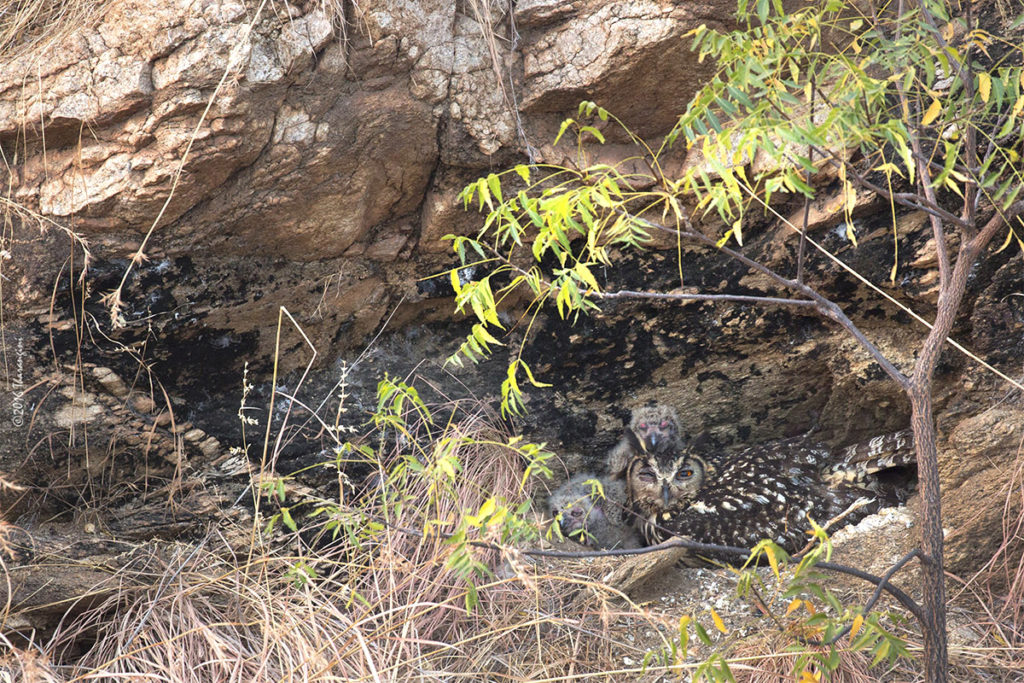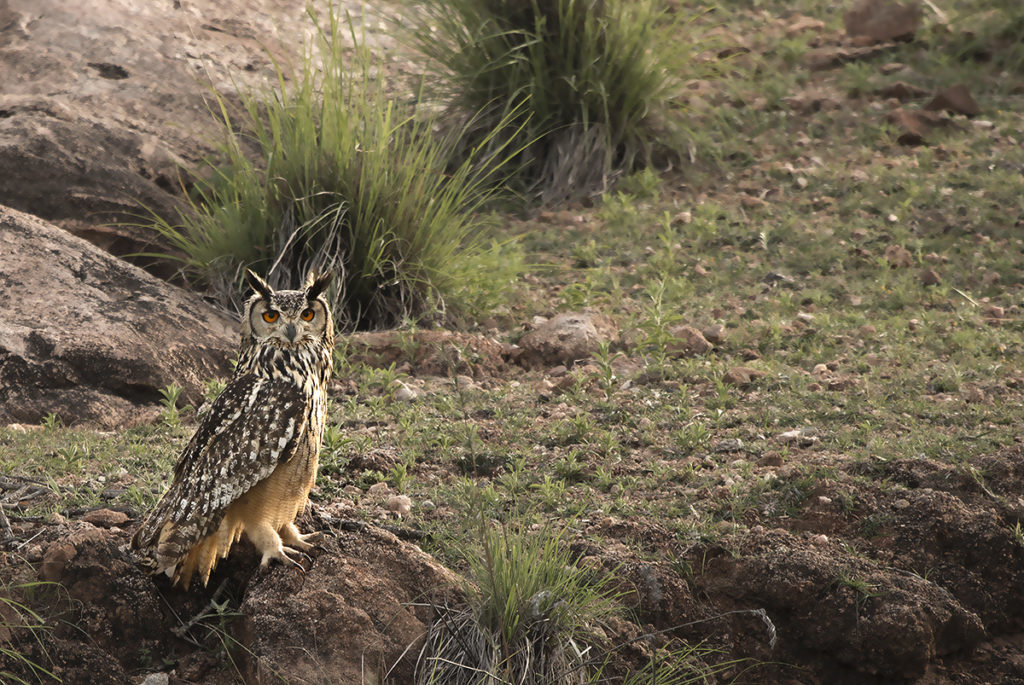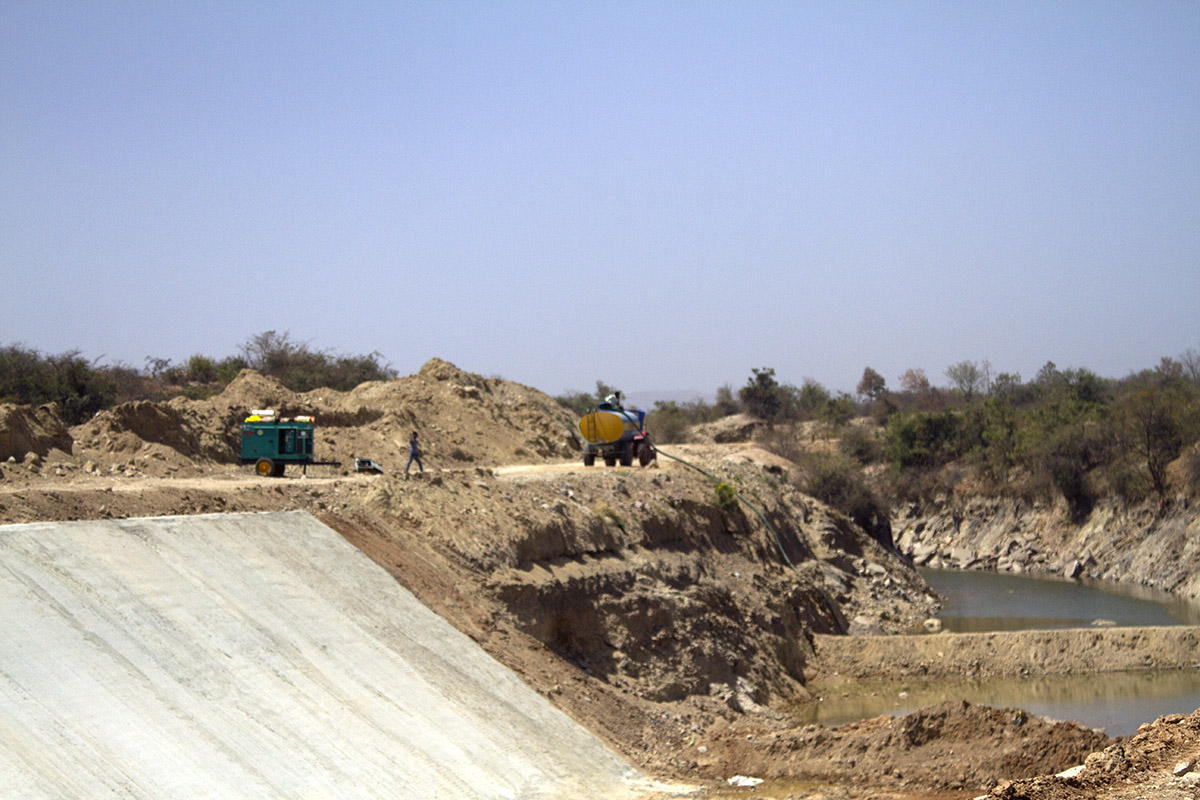Tharangini Bala
The renovation of the Tungabhadra canal has been a welcome feature as also a necessary development. However, at the same time, it has been detrimental to the nesting grounds of owls in Ballari district, Karnataka, India. All these years, the canal walls and service roads have served as an ideal habitat for a varied species of bird life.
The modernization of the Tungabhadra High Level Canal started over a year ago and has involved a lot of blasting work along its length. Concrete has devoured the rocky ledges and walls of the canal that once housed multitudes of bird species. As usual development has failed to see eye to eye with ecological needs.
The Tungabhadra low level and high level canals wind for over 100 kms through Karnataka before reaching Andhra Pradesh. With the project conceived in the 1860s and implemented during 1950s, the canals have done a lot more than just carrying water to Andhra Pradesh.

Indian Eagle owl, Brown fish owl, three species of Kingfishers and two species of Bee-eaters found the perfect home and habitat along the canal walls while the canal service roads became the frequent haunts of Chestnut bellied Sandgrouse, Painted Sandgrouse, Francolins, Lapwings along with a variety of Pipits, Larks and Munias among other species .
The rocky walls with protruding ledges, providing perfect camouflage spots and nesting grounds for the owls, have seen multiple generations of the owlets take wings and return to these familiar spots to breed each year. Unfortunately, this entire habitat is now being cemented.

Samad Kottur, Hospet based Naturalist and wildlife activist told Green Minute “When the canal was dug up over 60 years back the existing habitat at that time was destroyed and over a period of time, the Indian Eagle owl and other birds have made their habitat here. With this being concreted they will move elsewhere to settle down. Some are now being seen around the Daroji Sloth Bear Sanctuary area where they are more secure. These birds are highly adaptive unlike humans and have learnt to adapt and survive, but even then such a sudden and drastic destruction of their habitat is a huge blow for them.”
“We used to see almost 15 owls in this area but we can hardly see 1 or 2 now,” says Pompayya Malemath, Honorary Wildlife Warden of Ballari district.
“Instead of clearing all the vegetation they can limit the concreting till the level of the water flow and maybe 1-2 feet above the level. The rest of the area can be spared. The vegetation will not only strengthen the canal bund but will also continue to provide habitat for various birds in this area. That way it will benefit both development and environment,” suggests Malemath.

The idea of complete modernization did not go down well with the naturalists in the area who were well aware of the implications of the same on the surrounding wildlife and environment. The species in this area have been studied, observed and documented for a good period of time now.
“We were against this project and made many requests to withdraw it but authorities had a plan and went ahead with it,” adds Samad. “We asked them to leave the rocks and boulder crevices as it is, since anyway the rocks do not absorb water.”
A few patches of the canal bund were spared after these suggestions but activists fear if someone else takes over the project tomorrow, these patches will also get concreted without realizing the significance of these ledges.
“Any project that is taken up anywhere, other than private properties, should have an EIA (Environment Impact Assessment ) carried out with the expertise of local ecologists,” insists Samad. “Instead nobody visits these areas and all EIAs are just copy paste jobs .There have been instances where EIA for mining areas mention about presence of King Cobras and Chinkaras in this area,” he rues.
Now a hopeful Samad also looks at the brighter side. Citing the example of a number of migratory birds visiting the Ballari region after construction of the dam, he says all these activities can have both positive as well as negative effects.


Comment here